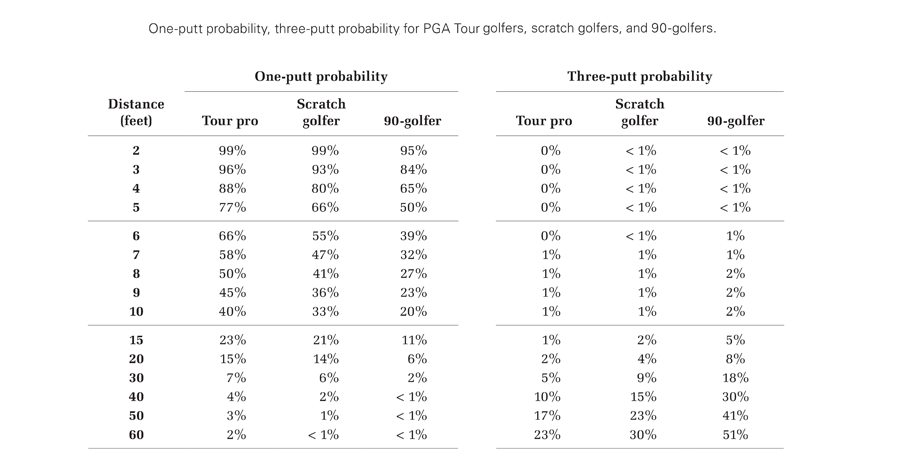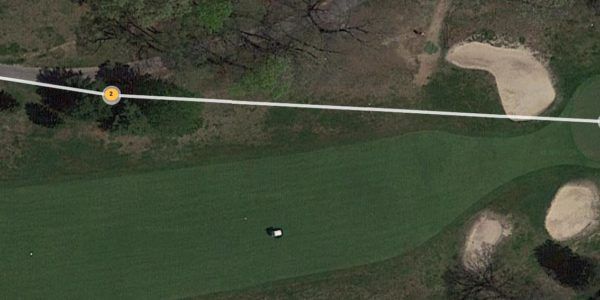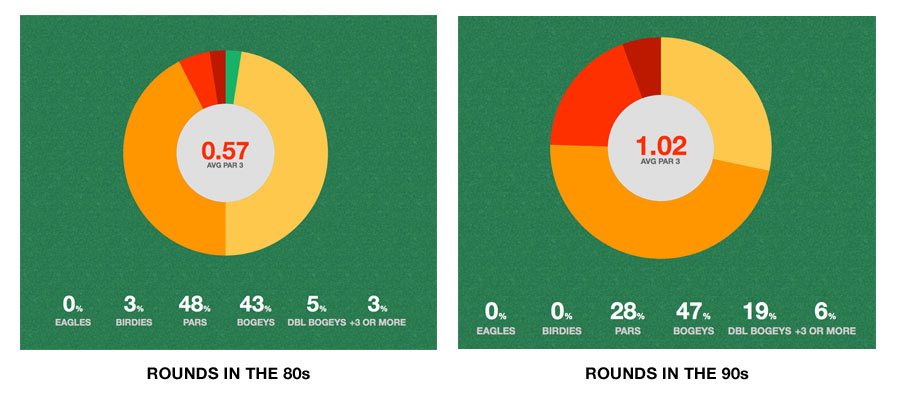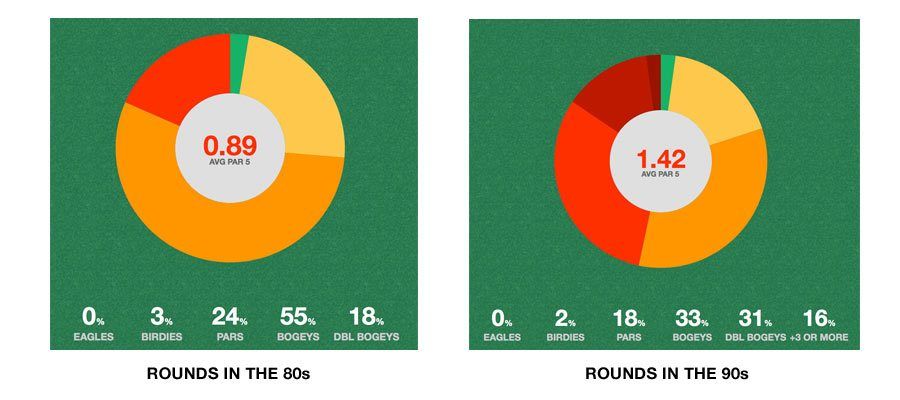
This is a guest post by Rusty Cage
Multiple surveys have revealed that fewer than 30 percent of all adult golfers are breaking 90. For players on the wrong side of that ledger, discussions about achieving that milestone or going beyond it must sound like a good case of wishful thinking.
But believe me, as a frustrated beginner who contemplated giving up, it’s entirely possible to turn around an average golf game - and you don’t have to be exceptionally talented to do it. Naturally, having the ability to hit the ball far is a huge advantage, but driving distance isn’t the only way to measure someone’s scoring potential. I’ve played with some guys, and you probably have as well, who can carve up a golf course without smashing it off the tee, proving unequivocally, that there are many ways to shoot a low score.
Learning how to save strokes with chipping and putting, plotting your way around a course and controlling your emotional state when the pressure is on - these are skills anyone can master with some hard work and discipline.
They all fall under the heading of course management, a broad subject that’s pivotal to your success as a golfer. But for the purposes of this article, I want to share my own unique insights and playing strategies that have helped me shoot lower scores. Breaking 90 isn’t as formidable a challenge as most struggling golfers make it out to be. Here’s how an average player like myself learned to do it.
Mental resiliency
Whether you’re a scratch golfer or a high-handicapper, you have to accept the fact that bad shots are going to happen during a round of golf. It’s as inevitable as the sun rising in the East.
The better players are able to react to bad break with perspective, even detachment, and view the next shot as an opportunity to right the ship. Speaking from experience, I can tell you that putting this kind of objective thinking into practice is much harder than it seems.
As someone who came into golf with a patchwork swing, no swag and a short temper, I used to fall apart at the first sign of trouble and then spend the rest of my round contemplating why I sucked. I didn’t have the resolve or the technical skill to bounce back, or so I told myself.
Looking back, I realize how much of that negative self-talk was simply a cop out; it’s something golfers lacking confidence frequently tell themselves to rationalize their bad play. Worst still, this negative perception of myself as a golfer hung over my head like a cloud even after I began to improve.
I suppose for some people, confidence might come naturally. But most of us have to work at it. I wish I could give you a bulletproof piece of advice, but the cultivation of self-assurance is a deeply personal thing. For what it’s worth, I found the book, Every Shot Must Have a Purpose, co-written by Pia Nilsson, Lynn Marriott and Ron Sirak to be really helpful. Of the many things that stood out from reading it is the notion that you can’t control the outcome of your golf shots; all you can do focus on the process. I think if you learn to channel your anxiety into a positive frame of mind (even if you have to fake it till you make it), you can really improve the quality of your golf game, even if your technical proficiency is lacking.
Don’t self-destruct your round
Recreational golfers, as a whole, have little appreciation for how hard the act of putting actually is. The best golfers on the planet sink a little more than half the putts they attempt from five to 10 feet; an 18-handicap golfer is damn lucky if he or she makes even a third of them.
I used to get bent out of shape when I failed to hole a putt from what I imagined was a makable distance. As for lag putts, don’t even get me started. I used to leave them well short or race them by the hole; either way, I was recording way too many 3-putts. Ideally, you’d like to have none. Learn to be ultra-protective of your scorecard when you’re on the green and treat every situation where you take three putts as an unforced error.

Speaking of inflicting self-induced harm, do yourself a favor and ditch your fairway wood, especially off the deck. Back when I was feeling heroic, and by heroic I mean dumb and stubborn, I used to pull my 3-wood out for a long approach shot, and every once in a while the gambit would pay off. But after I started crunching the numbers over an entire golfing season, I began to realize what an awful, low-percentage play that was. Anytime I miss-struck it, I was escalating the odds of making a double bogey or worse.
These days, I use my 3-hybrid exclusively for long approach shots. The shorter shaft and compact head shape makes it easier to swing the it like an iron and find the back of the ball. It’s a high-percentage choice that gives me an outside chance to make par on tougher holes; and if I do make bogey, it’s not the end of the world.
Getting out of jail
As a bogey-golfer, you’re going to find yourself in the rough quite a lot during play. Your first priority, as the traditional school-of-thought wisely suggests, is to limit the damage. The safe pitch out back into the fairway gives you a chance to salvage the hole; otherwise you run the risk of compounding your mistake.
However, if you’re going to start shooting in the 80s regularly, you’re going to need to develop a punch shot with a long iron. In the right situations, this type of golf shot can be an invaluable asset that lets you play offense instead of defense when you find yourself out of position.
For example, during a recent round of golf my tee shot landed into the left-hand rough. Walking up to my ball, I was fortunate to find it sitting up on a bed of pine straw. Despite being in a heavily-wooded area, there was a decent-sized opening in the general direction of the green. With about 130 yards to the front edge, I pulled out my 5-iron, aimed directly at the right-hand bunker and hit a low bullet that trundled up the putting surface.

It was a hell of a shot with a better-than-expected outcome, but it wasn’t an outright surprise. I let the conditions of the course and my frame of mind dictate the strategy. At that particular moment I was feeling pretty good about my game, and my chances of miss-striking a ball off a clean lie were reasonably low. If I had found the ball sitting down in the rough or surrounded by debris that could’ve interfered with contact, I would have chosen to lay up instead.
If you want to learn how to play this shot, here’s a few keys:
- Select a long iron that lets you hit the ball low underneath a canopy of trees.
- Grip down for better control and make a three-quarter swing.
- Resist the urge to play the ball too far back in your stance - let the loft of the club control the trajectory.
- Most importantly: maintain your focus through the downswing to ensure a clean hit on the ball; the desire to see where your ball ends up a split second too soon can result in poor execution.
Make the most of your opportunities
As with the case with putting, recreational players have an unrealistic expectation when it comes to scoring. Contrary to how easy the Tour Pros make golf out to be, making a par is tough work. The fact is, bogey is a perfectly acceptable score where two better-than-average swings are needed to get on the green in regulation.
This took a long while to sink in and I can recall sabotaging many promising rounds by placing too much pressure on myself to rise to the level of a single digit handicapper. Perhaps not surprisingly, I began to play much better overall when I stopped seeking perfection on every shot.
Still, I had to learn to take advantage of certain opportunities on the course. A golfer isn’t going to be breaking 90 through the steady accumulation of bogies and doubles. When I catalogued my scoring stats into two groups (rounds where I broke 90 versus those that I didn’t) a clear pattern emerged: I gained a half stroke on the par threes and the par fives any time I shot a round in the 80s. Below is a snapshot of my season-long stats.
Par three scoring performance:

I scored almost half a stroke better (0.45) when I was breaking 90.
Par five scoring performance:

I played even better on the par fives when breaking 90, gaining 0.53 strokes against my average performance scoring in the 90s.
Par four scoring performance:

I also performed better on the par fours, but my scoring differential (0.42) was smaller.
If you want to learn how to shoot lower scores, my advice is pretty simple: improve the quality of your misses. To do that, you need to think conservatively and play aggressively.
- Treat your greens in regulation as a bonus. Instead of going flag hunting, identify a target to the safe side of the green allowing you to chip or putt your way for a potential up and down.
- Know when to lay up. Sometimes you’ll come across a dog-leg that doesn’t suit your shot shape, or perhaps the reward for carrying a cross bunker isn’t enough to mitigate the risk. Don’t let ego force your hand and sabotage your golf score!
- Lastly, never second-guess yourself. Once you’ve identified your target and picked a club, swing freely and decisively.
Final thoughts on breaking 90
I hope my strategy for breaking 90 inspires you to develop your own roadmap for shooting lower scores. The ability to challenge yourself and grow as a player is one of the many reasons why the game of golf is so enthralling. At the same time, it can also be a great source of frustration for all golfers, especially for those starting out.
Still, golf doesn’t have to be grind; all you need to is develop some emotional resiliency, demonstrate good judgement, and play within yourself. And of course, remember to have fun. To paraphrase the legendary golf coach, Harvey Penick, golf is a game anyone can enjoy, not just the talented few.
We care about the protection of your data Read our Privacy Policy